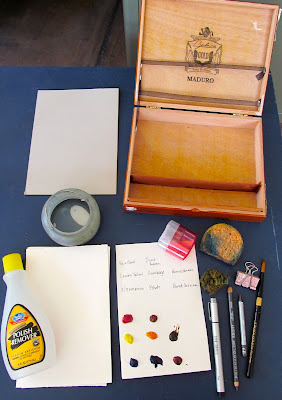Last week at my (sort of) local dollar store, I spotted this tin. I loved the size of it immediately and since it was only $5.00 and had chocolate inside, I bought it. I have an inner letch for metal tins, and use them to store art supplies. In fact, I will usually buy something I don't even need if the tin is the right size for my treasures. This one is a great size and I am posting so that if you have the same love of storage containers, you can go hunt one down in a Christmas candy display somewhere.
Being filled with chocolate was an issue. I love it, but will often eat all of it. I actually don't need all of it, but what can you do? There it is. I decided to just get it over with fast, and ate 5 pieces on the drive home! My drive home is 30 miles, don't judge me too harshly. It kept me awake..
So, now I will use it for a few things till I decide where it fits into my storage needs. It does work well for brushes. My studio is in the boonies, dust is an issue and this will keep them dust free.
It is a very nice size for watercolor tubes, also. I have more than will fit into it; they're in a large cookie tin of their own, but I use very few colors anymore. Hmm, this will take some time.
Pictured here are a few of my favorites. Clockwise from the top, a mint tin, full of tiny drill bits for my Dremel tool, a Conte tin full of Conte sticks, a tin printed with apples for my calligraphy pens and above that to the left, a tin for Rapidograph pen parts. As you can see, my new tin will stack together nicely with the others.
Happy creating!





























